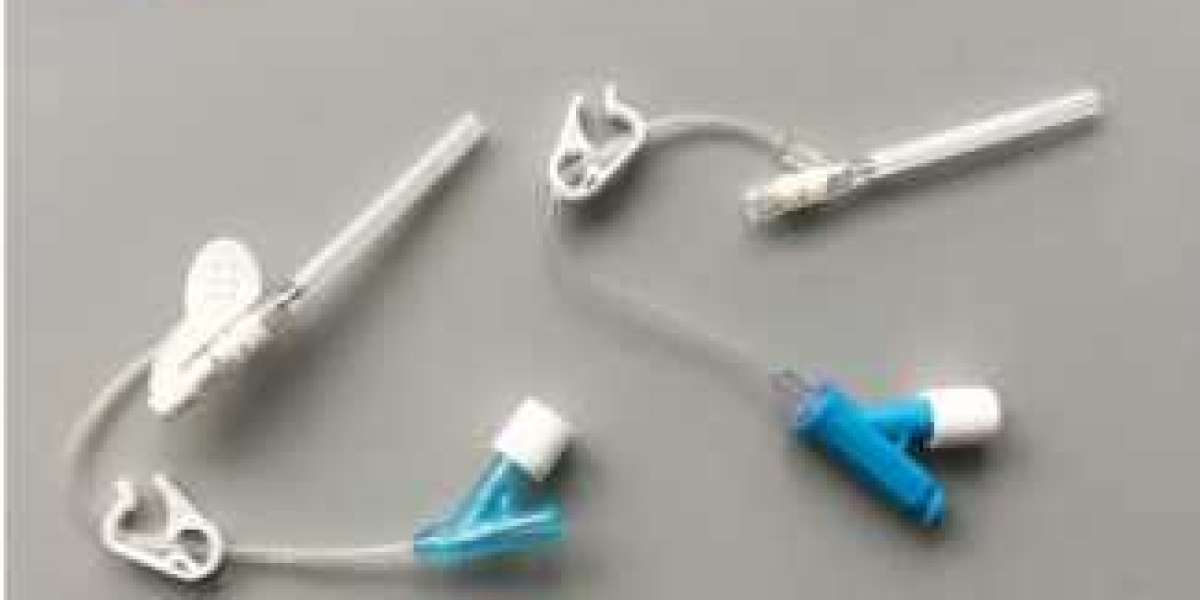Venous indwelling needle is also called venous trocar. The components of the core include a soft catheter / cannula that can be retained in the blood vessel and a stainless steel puncture guide needle core. When in use, the catheter and the needle core are punctured into the blood vessel together. When all the catheters enter the blood vessel, the needle core is withdrawn, and only the soft catheter is retained in the blood vessel for infusion treatment.
Classification of indwelling needle
The indwelling needle is divided into open type and closed type. The open type is divided into ordinary type and safe type (anti needle stabbing type), and the closed type is divided into ordinary type and safe type (anti needle stabbing type). The left figure shows the open venous indwelling needle, and the right figure shows the closed venous indwelling needle.
Usage of indwelling needle
- Usage of closed indwelling needle
1) Connect the infusion set with the infusion solution and hang it on the infusion rack, exhaust, open the outer packaging of catheter needle, heparin cap or positive pressure connector, and wear gloves.
2) Select the vessel. Tie the pressure pulse belt 10cm above the puncture point, disinfect the local skin as usual, and wait to dry.
3) Take out the catheter needle, remove the needle sleeve, and rotate the needle core so that the inclined plane of the needle head is upward. Connect the indwelling needle with the heparin cap, insert the needle tip of the infusion set needle into the heparin cap (after the indwelling needle exhausts all the air, insert all the needles into the heparin cap). If a positive pressure connector is used, unplug the needle, connect the infusion set to the positive pressure connector, exhaust all the air in the indwelling needle, and turn off the infusion set switch.
4) The needle is punctured at an angle of 15 ~ 30 ° with the skin. After seeing the blood return, reduce the angle, and then push the puncture needle 0.2 ~ 0.5cm to puncture. Ask the patient to clench his fist, tighten the skin with his left hand, and clamp the guard wing of the catheter needle with his thumb and index finger with his right hand. Fix the catheter needle with the right hand, pull out the needle core 0.5 ~ 1cm with the left hand, send all the outer tube into the vein with the left hand, loosen and press the pulse belt, and ask the patient to loosen his fist.
5) Draw out the needle core, fix the catheter needle with a special application, write the patient's name, indwelling date and time on the application, fix the indwelling needle extension tube with adhesive tape, then fix it, and take out the pulse pressure belt.
6) Take off your gloves and check again. Record the time and dropping speed on the infusion card and sign. Adjust the infusion speed according to the doctor's order and condition.
- Usage of open indwelling needle
The open indwelling needle does not have an extension tube. When in use, rotate the needle core to pierce the needle into the skin. After seeing the blood return, reduce the puncture angle, pull out the needle core a little, and then send the outer sleeve into the vein. With one hand, gently press and hold the puncture vein to reduce the blood return. With the other hand, pull out the needle core, connect the heparin cap to the indwelling needle, cover the puncture point with transparent accessories, and fix the infusion needle with adhesive tape. The rest are used in the same way as the closed indwelling needle.
Advantages of indwelling needle
Easy to puncture, easy to learn relevant puncture techniques, protect patients' blood vessels, reduce patients' pain, feel comfortable, and improve patients' satisfaction and nursing quality. There are many different structural products to choose from, and there are catheters of different lengths to choose from, so as to improve nurses' work efficiency, use drugs reasonably, avoid multiple intermittent infusion every day, reduce puncture and failure to use drugs on time, avoid drug reaction, reduce costs, and reduce the cost of exudation treatment caused by scalp needle puncture.
Tag:Classification of indwelling needle,Usage of indwelling needle,Advantages of indwelling needle



